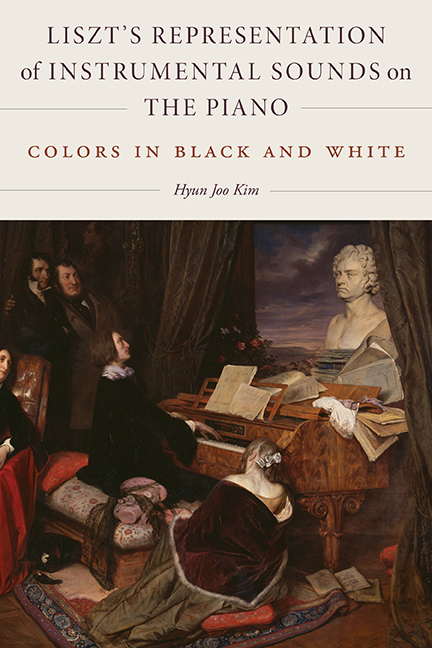Book contents
- Frontmatter
- Contents
- Introduction
- 1 Approaching the Reproductive Arts
- 2 “Partitions de Piano”
- 3 Between “Text” and “Event”: Liszt's Guillaume Tell Overture
- 4 Translating the Orchestra: Liszt's Two-Piano Arrangements of His Symphonic Poems
- 5 Interpretive Fidelity to Gypsy Creativity: Liszt's Representations of Hungarian Gypsy Cimbalom Playing
- Conclusions: Recurring Techniques and Aesthetics
- Appendix: Liszt's Preface to His Piano Arrangements of Beethoven's Fifth and Sixth Symphonies in the Breitkopf & Härtel Edition, 1840
- Notes
- Bibliography
- Index of Liszt's Works by Genre
- Subject Index
- Frontmatter
- Contents
- Introduction
- 1 Approaching the Reproductive Arts
- 2 “Partitions de Piano”
- 3 Between “Text” and “Event”: Liszt's Guillaume Tell Overture
- 4 Translating the Orchestra: Liszt's Two-Piano Arrangements of His Symphonic Poems
- 5 Interpretive Fidelity to Gypsy Creativity: Liszt's Representations of Hungarian Gypsy Cimbalom Playing
- Conclusions: Recurring Techniques and Aesthetics
- Appendix: Liszt's Preface to His Piano Arrangements of Beethoven's Fifth and Sixth Symphonies in the Breitkopf & Härtel Edition, 1840
- Notes
- Bibliography
- Index of Liszt's Works by Genre
- Subject Index
Summary
Style in engraving is the preeminence of drawing over color and of beauty over richness. I say “color,” because the engraver, although he has only the limited, monochrome effect of black and white [available to him], has nevertheless his very own way of being a colorist.
—Charles BlancIn his Grammaire des arts du dessin (The Grammar of Painting and Engraving), the art critic Charles Blanc made the sensational and paradoxical assertion that the engraver, who creates only a “monochrome effect,” is essentially a “colorist.” Along similar lines, he argued that “the engraver having at his disposal, so far as color is concerned, only black and white, ceases to be a copyist and becomes, instead, a translator.” Blanc further described the engraver's endproduct as similar to that of a translator [of a verbal text], in that it “highlights the essential [features], that nonetheless manages to indicate everything and to say everything.” The notion of engraving as translation was well ingrained in the minds of Blanc's contemporary critics. For instance, the outstanding engraver Nicolas Ponce (1764–1831) conceived the engraving as “not a copy of the painting” but “a translation of it, which is different.” He makes the further significant point that the “line” of a print can be translated literally, whereas the “effect, the color and the harmony of a print” are reliant on the engraver's reinterpretation, which requires his “genius.”
Blanc and Ponce brought up the widespread nineteenth-century qualms about one critical limitation of engraving: the lack of color. Around the same time, music critics and reviewers also often made an analogy between the piano transcription and its visual counterpart of engraving by focusing primarily on their mutual deficiency: the inability to transport the original “colors” literally. E. T. A. Hoffmann's famous comparison of a piano transcription to a black-and-white sketch of an oil painting conceives transcription as an outline of the original music, incapable of conveying its colors and sounds in depth. At the same time both camps of music and art critics understood how art reproduction stimulates the executor's imagination in translating the original colors. As we observed above, Blanc and Ponce considered the limitation as compelling the engraver to “highlight the essential aspects” of the original and “create the effect and harmony of his print,” respectively.
- Type
- Chapter
- Information
- Liszt's Representation of Instrumental Sounds on the PianoColors in Black and White, pp. 1 - 13Publisher: Boydell & BrewerPrint publication year: 2019

